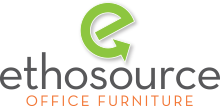 How Light is Affecting Your Workplace
How Light is Affecting Your Workplace
Part two of our three-part blog series on Increasing Morale and Productivity in The Workplace will explore the various psychological, behavioral, and physical effects light has on us in our workplace environments and daily lives.
Let’s start at the beginning. Well, we won’t go all the way back to Ben Franklin’s key and kite getting struck by lightning but, where we will go is the early 1800’s where the concept of the lightbulb occurred. A close runner-up to the “greatest of all time” debate between Michael Jordan and Lebron James, is the controversial debate about where, when, and who created the first source of electrical light. Okay… not really but, contrary to what many people will tell you, Thomas Edison did not create the first light bulb. Italian inventor Alessandro Volta conjured up the idea of the light bulb and created the “voltaic pile” which made him the first person to generate electricity. Joseph Swan and Thomas Edison joined forces in 1879 to create a cost-effective, thin-filament light bulb which resembles the ones we now use today to light our homes and office spaces.
While all of this newfound knowledge is great, let’s now delve into how light affects your workplace. Similar to the last blog on color and its effects, light in your workplace (both natural and artificial) can have major biological and psychological effects.
Let’s begin with the potential biological implications that light can have on us and our office peers. Light can have negative and positive effects on our sleep, cognition, mood, and our circadian rhythms. Psychologically, light has the capability to decrease depression, boost reaction time and improve activation. Now, to the part you care about the most… what changes and additions can you apply in your workplace to get those creative juices flowing and moods brightened. A perfect callback to the first blog in our series, we’ll start with the three characteristics of light in relation to color: brightness, saturation, and hue.
Brightness is the amount of light given off by a light source. Strong light can intensify emotions and opposingly, weaker light can keep emotions stable and lead employees to make clearer decisions and even agree with others during negotiation.
Saturation is the intensity of a color. The more saturated a light source is, the more it will heighten the effects listed above such as cognition, mood, reaction time and vice versa with less saturated light.
Hue is the shade or altered color of light. Blue and white light can increase energy during your work-filled day. Red and amber light can improve mental health because of its ability to increase melatonin secretion which results in a better night’s rest.
Lastly, light can help us better interpret new environments/workplaces and increase comfort levels. One study showed that when we enter a new environment, our brains try to find a similar memory in our mind that closely resembles that environment. Light can aid in enhancing elements, textures, and colors in your workspace to make clients and other visitors feel more comfortable and calm. The direction of light can also have a very similar effect. Light above eye level can surface feelings of restraint while light below this area can trigger feelings of individual importance.
No matter which tactics or tips you choose to utilize in your workplace lighting, any of these options will be a surefire way to enhance the morale, productivity, and overall mood of your workplace. And hey, now you can be the person with the fun fact that Thomas Edison did indeed NOT create the first lightbulb.
